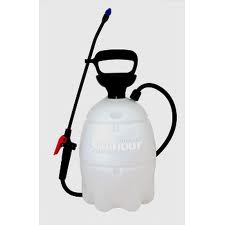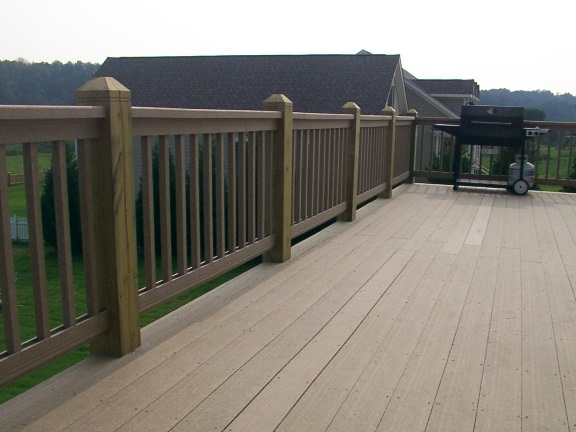Deck Sealant
Decks are a beautiful, prominent and often expensive addition to your home. Properly cared for they can maintain their beauty and value for decades. It only makes sense to protect an investment with so much potential with a good deck sealant. The elements are very harsh on a deck, from ice, sleet and snow in the winter to rain and baking sun in the summer, a deck has to withstand tremendous variations in climate. Additionally improper maintenance can actually do more harm to your deck than the elements. See how to properly power wash a deck for insight on how pressure washing may damage your deck.
Why Use a Deck Sealant?
The wood used in decks naturally soaks up water from rain, snow or washing, causing it to swell; then as it dries out it shrinks back to normal size. This repeated movement eventually leads to loose or shifted deck boards as well as a reduction in the holding power of the deck screws and nails. Water trapped in the deck boards during cold weather may freeze. The expanding ice can damage wood fibers resulting in accelerated degradation of the deck boards. Over time excessive saturation may gradually leach out the preservatives that keep the wood decay and insect resistant.
One of the best ways to maintain the beauty and value of a deck is by applying a good deck sealant every one to three years. Economy sealants should be applied yearly. Use a premium sealant for intervals longer than one year. A sealed deck absorbs less moisture, substantially decreasing movement of the deck boards. The likelihood of damage to wood fibers from freezing is also greatly diminished when a deck is properly sealed.
Choosing a Sealant or Stain+Sealant
There are a variety of deck sealants and stain+sealants available at most hardware or building supply stores. Deciding on which products are best for your deck can be quiet a challenge. In order to make a good decision first determine what you are trying to achieve. If your deck has never been stained and you want to change the color, you need to use a stain or stain/seal product. Read the post (Staining decks) for some insight on how to choose and apply deck stains. If your deck has already been stained then you should only use a stain of similar type and color. Do not apply latex base stain over oil base or oil base stain over latex. Always test an inconspicuous area of the deck to see if you are going to get the desired results.
If your only interest is protecting your deck then applying a deck sealant is all that is required. Be aware that if you apply sealant to your deck you should wait at least one year and possibly up to three or more years before applying any stain. Even then test an inconspicuous area first to see if the stain will penetrate properly.
Deck sealant is available in both oil base and water base formulas. Most deck sealants now provide some UV protection from the sun. Unstained wood will naturally turn grey over time. UV rays will also cause the color of stained wood to fade. To achieve the best results, make sure the deck has dried thoroughly before applying any sealant or stain.
Application Tips
Sealants can be applied by brush, pad, roller and pump or airless sprayer. If you are using  a stain/sealer product follow the application guidelines found in (Staining Decks). If you are using a sealer only, apply using any combination of the tools listed above. Water based stains usually have a milky appearance that dries clear. Oil base sealants will darken the wood as it is applied. As it dries the dark color will lighten back up to near the original shade.
a stain/sealer product follow the application guidelines found in (Staining Decks). If you are using a sealer only, apply using any combination of the tools listed above. Water based stains usually have a milky appearance that dries clear. Oil base sealants will darken the wood as it is applied. As it dries the dark color will lighten back up to near the original shade.
Decide on a plan of action that will permit you to apply sealant to all areas of the deck while ending up on the steps so you are not trapped in a corner.
- Make sure deck is clean and dry before applying sealant
- Wear neoprene gloves (sealant is difficult to remove from hands)
- Wear cloths and shoes that you don’t mind getting sealant on.
- Mask or cover all areas that you don’t want sealant on including nearby plants.
- Do not apply sealant with a sprayer on windy days.
- Stir sealant thoroughly and often.
- Apply a heavy coat but not enough to drip or puddle.
- Start with the rails and work down to the floor.
- Seal the band, under pinning (if applicable) and steps last.
- Danger of spontaneous combustion! Read and follow manufacturers recommendations for disposal of stain/sealant soaked items including brushes, roller covers, pads and especially clean up rags.(this applies to oil based stains)




